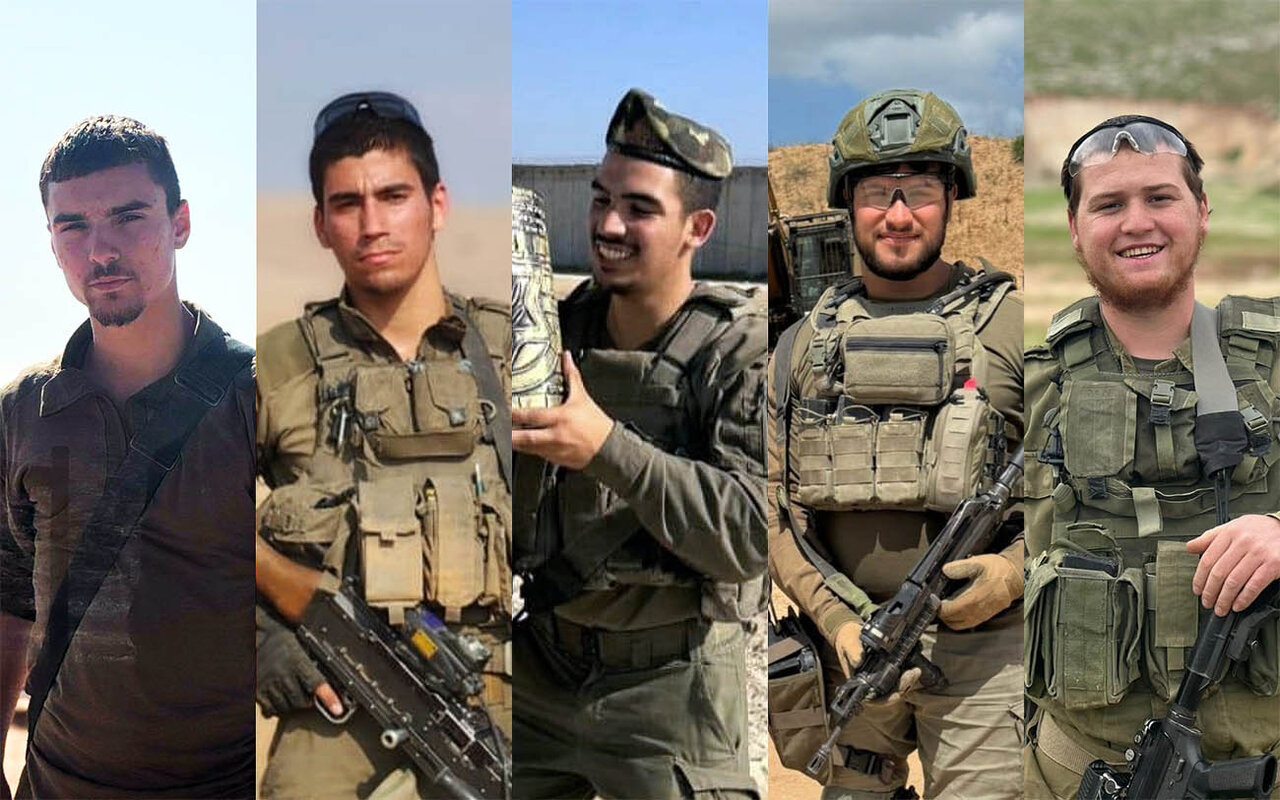Gaza turns into occupation's graveyard

TEHRAN – The Israeli occupation regime’s soldiers have been caught up in a sophisticated ambush described as one of the “deadliest” since October 7, 2023.
The Israeli occupation regime’s military has officially confirmed the deaths of at least five soldiers from the Netzah Yehuda brigade and reported 14 others wounded in Beit Hanoun, located in northern Gaza.
Hebrew media reported dozens of casualties and in a rare move criticized the occupation regime’s military censorship rules.
The “difficult incident,” as described by Israeli regime media, raises more questions than answers for the government of war criminal Benjamin Netanyahu.
It marks a significant blow to the image of military control that the occupation regime seeks to project.
Beit Hanoun, the northeasternmost town in the Gaza Strip, was among the first areas to be devastated during the initial phase of the Israeli occupation regime’s genocidal war on October 7, 2023.
Within the first 20 days, the town was subjected to indiscriminate airstrikes, reducing it to rubble. It was also the first urban area to face a full-scale ground invasion.
The town's strategic significance lies in its proximity to Israeli occupation settlements, less than three kilometers from Sderot, making full control over Beit Hanoun a priority for the regime.
Now, after 21 months of U.S.-backed genocidal war on Gaza, one of the deadliest incidents since the initial invasion has occurred in this very area, a major embarrassment for Netanyahu’s regime and deeply unsettling for the settler population.
Abu Ubaida, the spokesperson for the al-Qassam Brigades, stated that the operation took place in a battlefield the occupation mistakenly believed was secure, “after it had left no stone unturned.”
This incident underscores a broader truth: the Israeli occupation regime’s officially declared objective of eliminating the Palestinian resistance has proven to be a colossal failure.
Despite imposing a suffocating blockade and employing a range of brutal tactics, Israeli occupation forces (IOF) continue to suffer daily casualties, killed or wounded by Palestinian resistance fighters who have refused to be broken.
The attempt to sustain a long-term occupation in Gaza is becoming increasingly unsustainable and deadly for Tel Aviv.
What has emerged is a full-blown war of attrition between the IOF and a highly resilient Palestinian resistance.
So what happened in Beit Hanoun?
Palestinian resistance fighters executed a carefully coordinated ambush. The first explosive device targeted an IOF tank. A second device struck a rescue team that arrived on the scene. A third explosive targeted an additional rescue force, and finally, a fourth device, combined with light weapons fire, targeted those already wounded in the initial blasts.
Amid the chaos, three IOF soldiers went missing; one of them was later found dead. There are fears in the IOF that at least one may have been kidnapped. Five Israeli military helicopters transported the dead and wounded to Ichilov Hospital in Tel Aviv.
According to Hebrew media, the actual number of wounded in this “difficult incident” could be in the dozens, far higher than what was officially acknowledged.
The al-Qassam Brigades, the armed wing of Hamas, which Netanyahu has vowed to eradicate, claimed responsibility for the highly sophisticated operation.
Over recent months, Palestinian resistance fighters have grown bolder, often emerging from the rubble of devastated areas to conduct direct engagements and detonate pre-planted explosives.
This tactic has now become a hallmark of resistance operations across the Gaza Strip, from Khan Younis in the south to Jabalia in the north.
Despite repeated invasions and temporary captures by IOF forces, who are forced to withdraw under fire, there has been no indication of collapse or fatigue within the Palestinian resistance.
On the contrary, the longer the genocide drags on, the more evidence emerges of strategic planning, disciplined coordination, and a high level of military command among Palestinian fighters.
On the other side, there is clear evidence of fatigue and hopelessness among IOF soldiers. No army, in particular one equipped with a vast array of sophisticated and advanced military technology, takes two years to eliminate an enemy confined to a tiny territory the size of Gaza.
The military option pursued by the Israeli occupation regime has backfired. Notably, the only instances in which captives have been released from Gaza have occurred through ceasefires, not through military operations.
In a post on Telegram, Abu Ubaida warned that if the Israeli occupation regime had managed to rescue its soldiers from what he described as “hell” it would not succeed again. He also hinted that more soldiers could be captured in the future.
Furthermore, Abu Ubaida cautioned Netanyahu that the “most foolish decision” he could make would be to keep IOF forces inside the Gaza Strip.
It Is evident that the resilience of the Palestinian people and the bravery of the resistance are what shape the reality on the ground and define the next phase.
Leave a Comment